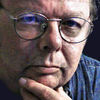Question about RAW images in Adobe Elements RAW Editor
Dec 7, 2014 11:28:05 #
lsimpkins wrote:
Searcher, I believe that the Adobe applied settings in the Library are the same as those in the Develop Module under Camera Calibration/Profile "Adobe Standard". At least for my Pentax, there are other Profiles to choose from, including "Embedded" which is Adobe's implementation of the in-camera JPEG settings. Like you, though, I don't know if (how) they can be changed in the Library Module unless through the Import process.
What I think happens, though I have absolutely no evidence to verify my thoughts is:
The raw file is looked at by LR and the embedded jpeg is copied (extracted) into the import module.
When the Import button is pressed, a catalogue entry is created with the image location etc. Inside the raw file is already an instruction set, it is not part of the image but is inside the encapsulation of the raw file. One of the instructions in the set is white balance. The white balance "as shot" is applied to the preview along with another instruction - orientation. (orientation can be turned on or off in the camera, if off then LR will assume the image is landscape). Other stuff packed into a raw file is the Exif data generated by the camera.
The preview is stored in in a folder "???.lrdata" which is in the same folder as the catalogue.
You can watch this in action, if you import a large number of raw files, keep an eye on the images in the library. The first pass brings them in, the second pass changes the orientation when required and the white balance.
If a raw file is imported with an accompanying xmp (sidecar) file, the instructions are read from the xmp file after reading the embedded info from the raw file. thus you may be able to detect a third sweep of the imports, but this occurs very quickly.
The raw file is not an image file in the sense that if you ran the code in an assembler, the image would show. It won't. The data is in itself an instruction set to build an image, hence the need for software to read, decode, map and produce an actual image file.
You can open an xmp file quite easily in Windows (probably Mac as well) by opening Notepad, File > Open (point to a xmp file), you will see all the modifications made by ACR over the course of time and the usual Exif data. What you won't see is the location info, only the catalogue keeps this.
The information in the xmp file is read and applied to previews in any application that is capable of handling xmp files.
Dec 7, 2014 11:49:23 #
Searcher, I think you nailed the process for those shooting in their camera's native RAW format. I shoot DNG in-camera, so only your comments in regards to the XMP side car do not apply.
Dec 7, 2014 12:39:12 #
Is the image that is seen on the LCD in 'Live View' a temporarily created image for the LCD, or is it the jpeg that will be recorded?
Dec 7, 2014 12:50:48 #
WAKD wrote:
Is the image that is seen on the LCD in 'Live View' a temporarily created image for the LCD, or is it the jpeg that will be recorded?
It is definitely not the image that will be recorded - it changes all the time, but exactly what it is I don't know. I suspect it is similar to a television image, but I don't know what that is either. (I do know how a TV image is generated, but don't know if jpg protocols are used or something entirely different.)
Dec 7, 2014 13:57:50 #
I'll just add a little more to Searcher's explanation. Some of the confusion comes from our understanding of what constitutes a camera image. Back in the day before digital cameras all computer images were bitmapped, that is the file was a dot for dot recording of the image. If you "opened" a bitmap file you didn't see code, the actual image was there.
Jump ahead to now to "images" produced by a camera sensor. The embedded hardware in the camera reads four values from each pixel in the sensor; red, blue, green and luminesces, producing four image channels. The image you see on the camera's LCD is a composite of those four channels (similar to a jpeg image). If you set your LCD to show a histogram of the image you can see the relative balance of those four channels in the image.
The RAW file saved by the camera is a set of instructions describing the values for each of those channels. When a RAW file is displayed, the image is a composite of those instructions. However the RAW editor allows you to vary the value of each of those channels, which changes the instruction set.
When a RAW file is converted to a jpeg (or any other compressed format) two things happen: 1- the total numbers of colors saved is reduced to what is called sRGB, and 2- the four channels are reduced to two, the tint (combining three colors to one) and brightness. This produces a file which is much smaller than the original RAW. A jpeg file is still just another instruction set and must be "read" by software to produce a displayable image.
That is just the short version of what happens in your camera and your computer. There are whole books written on just this subject alone. Doug
Jump ahead to now to "images" produced by a camera sensor. The embedded hardware in the camera reads four values from each pixel in the sensor; red, blue, green and luminesces, producing four image channels. The image you see on the camera's LCD is a composite of those four channels (similar to a jpeg image). If you set your LCD to show a histogram of the image you can see the relative balance of those four channels in the image.
The RAW file saved by the camera is a set of instructions describing the values for each of those channels. When a RAW file is displayed, the image is a composite of those instructions. However the RAW editor allows you to vary the value of each of those channels, which changes the instruction set.
When a RAW file is converted to a jpeg (or any other compressed format) two things happen: 1- the total numbers of colors saved is reduced to what is called sRGB, and 2- the four channels are reduced to two, the tint (combining three colors to one) and brightness. This produces a file which is much smaller than the original RAW. A jpeg file is still just another instruction set and must be "read" by software to produce a displayable image.
That is just the short version of what happens in your camera and your computer. There are whole books written on just this subject alone. Doug
Dec 7, 2014 15:08:13 #
Again thanks to all with the explanations of what happens between the camera and the computer. It does appear that the converter in Elements reads the RAW file and converts it to an image that you work with, not the imbedded JPEG. I now have enough information to be dangerous in a bar conversation!!
Dec 7, 2014 20:03:53 #
threedeers wrote:
I am currently using Elements 11 and a Nikon D5100. I am wondering that when you work with the RAW image in Elements does this view have all the camera settings that is used in the JPEG file? I know that it uses the camera setting for white balance. Are all the other adjustments carried to the RAW image such as Picture Control Image (Vivid etc.) and Noise Reduction?
Thanks in advance
Thanks in advance
No only way to get those is to use Nikon Proprietary software
If you want to reply, then register here. Registration is free and your account is created instantly, so you can post right away.





